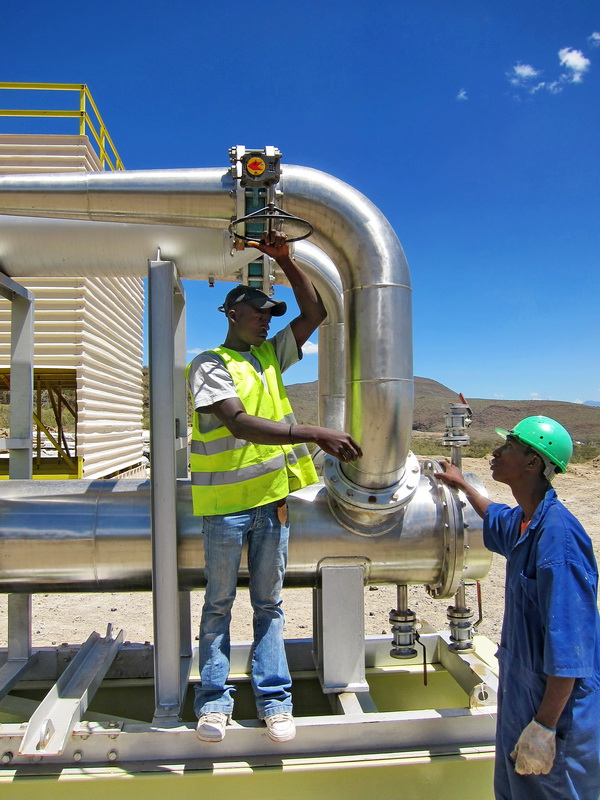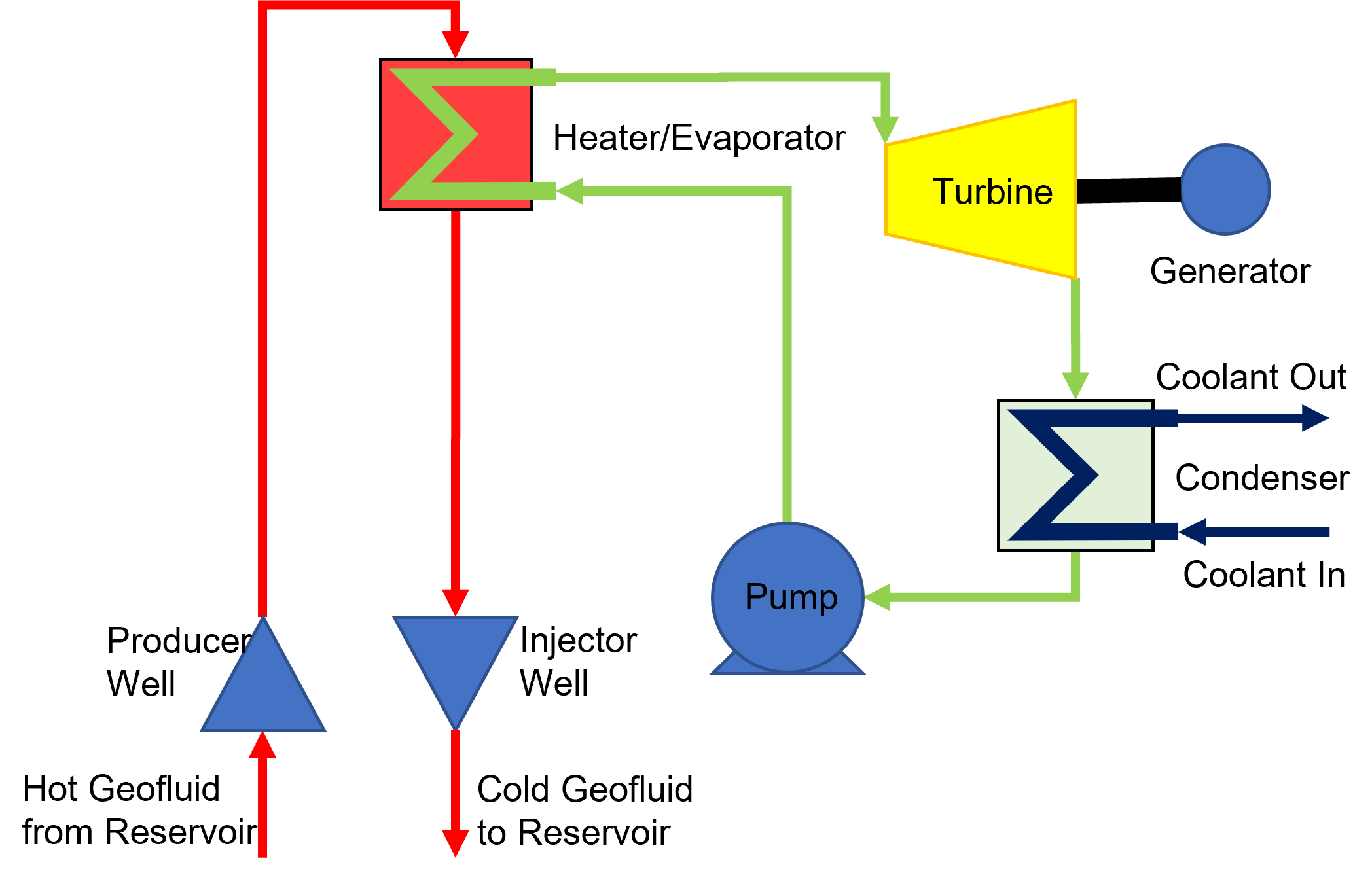|
Top Energy
Top Energy Limited is an electricity distribution and generation company based in Kerikeri, New Zealand. It owns and manages the electricity lines network in the Far North District of New Zealand, including Kaitaia, Kerikeri and Kaikohe. The service area covers 6,822 km2 and serves over 32,000 customers. It also owns and operates the Ngāwhā Geothermal Power Station. Ownership Far North power consumers connected to Top Energy’s line network own the company, with the shares being held on their behalf by the Top Energy Consumer Trust. Distribution network The Top Energy distribution network is connected to the national grid at Kaikohe substation. The annual performance can be found in Top Energy's Group Annual Report on their website Ngāwhā Geothermal Power Station Top Energy owns and operates the Ngāwhā Geothermal Power Station on the Ngawha geothermal field. It utilises binary cycle technology manufactured by Ormat Industries and produces 56MW. The power stati ... [...More Info...] [...Related Items...] OR: [Wikipedia] [Google] [Baidu] |
Kerikeri
Kerikeri () is the largest town in Northland, New Zealand. It is a tourist destination north of Auckland and north of the northern region's largest city, Whangarei. It is sometimes called the Cradle of the Nation, as it was the site of the first permanent mission station in the country, and it has some of the most historic buildings in the country. A rapidly expanding centre of subtropical and allied horticulture, Kerikeri is in the Far North District of the North Island and lies at the western extremity of the Kerikeri Inlet, a northwestern arm of the Bay of Islands, where fresh water of the Kerikeri River enters the Pacific Ocean. The village was established by New Zealand's pioneering missionaries, who called it Gloucester Town, but the name did not endure. The Māori word ''Kerikeri'' was interpreted by said missionaries as Keddi Keddi or Kiddeekiddee, before the romanisation methods they used were revised to what is used today. In 1814, Samuel Marsden acquired lan ... [...More Info...] [...Related Items...] OR: [Wikipedia] [Google] [Baidu] |
Ormat Industries
Ormat Technologies, Inc. is an international company based in Reno, Nevada, United States. Ormat supplies alternative and renewable geothermal energy technology. The company has built over 190 power plants and installed over 3,200 MW. As of January 2021 it owns and operates 933 MW of geothermal and recovered energy based power plants. Ormat has supplied over 1000 turbochargers worldwide: North America, South America, Europe, Australia, and Asia. The company's products also include turbines, generators, and heat exchangers. The company's share is a dual stock traded on the Tel Aviv Stock Exchange since 1991 and on the New York Stock Exchange since 2004 under the symbol ORA, and is part of the Tel Aviv 35 Index and the Tel Aviv Tech-Elite Index The company's main production facilities are located in Yavne, Israel. History Ormat was established in 1965 as Ormat Turbines Ltd. (later renamed Ormat Industries), in Yavne, Israel, by engineer Lucien Bronicki, the company's chairm ... [...More Info...] [...Related Items...] OR: [Wikipedia] [Google] [Baidu] |
Electric Power Distribution Network Operators In New Zealand
Electricity is the set of physical phenomena associated with the presence and motion of matter that has a property of electric charge. Electricity is related to magnetism, both being part of the phenomenon of electromagnetism, as described by Maxwell's equations. Various common phenomena are related to electricity, including lightning, static electricity, electric heating, electric discharges and many others. The presence of an electric charge, which can be either positive or negative, produces an electric field. The movement of electric charges is an electric current and produces a magnetic field. When a charge is placed in a location with a non-zero electric field, a force will act on it. The magnitude of this force is given by Coulomb's law. If the charge moves, the electric field would be doing work on the electric charge. Thus we can speak of electric potential at a certain point in space, which is equal to the work done by an external agent in carrying a unit of positiv ... [...More Info...] [...Related Items...] OR: [Wikipedia] [Google] [Baidu] |
List Of Power Stations In New Zealand
This is a list of power stations in New Zealand. The list is not exhaustive – only power stations over 0.5 MW and significant power stations below 0.5 MW are listed. Power plants in New Zealand have different generating roles – for baseload, intermediate or peaking. Baseload generators are those that run continuously (except for maintenance), and include all geothermal and run-of-the-river hydroelectric plants, which must 'use it or lose it'. Intermediate generators are load-following power plants. Peaking power plants generate only for minutes or hours at a time, during the sharpest peaks in electricity demand. Bioenergy Geothermal Hydroelectric Source: Decommissioned hydroelectric Heritage hydroelectric Fossil-fuel thermal Source: Wind Sources: Solar Grid battery storage Proposed power stations Source: See also *Energy in New Zealand *Electricity sector in New Zealand * List of New Zealand spans *New Zealand electricity market ... [...More Info...] [...Related Items...] OR: [Wikipedia] [Google] [Baidu] |
Geothermal Power In New Zealand
Geothermal power in New Zealand is a small but significant part of the energy generation capacity of the country, providing approximately 17% of the country's electricityElectricity in New Zealand 2018 (from the New Zealand Electricity Authority. Accessed 2019-17-06.) with installed capacity of over 900 MW.Geothermal Energy and Electricity Generation (from the New Zealand Energy Efficiency and Conservation Authority website. Accessed 2019-17-06.) New Zealand, like only a small number of other countries w ... [...More Info...] [...Related Items...] OR: [Wikipedia] [Google] [Baidu] |
Electricity Sector In New Zealand
The electricity sector in New Zealand uses mainly renewable energy, such as Hydroelectricity, hydropower, geothermal energy, geothermal power and increasingly wind energy. , 82% of electricity is generated from renewable sources, making New Zealand one of the countries with the lowest carbon dioxide emissions from electricity generation. Electricity demand grew by an average of 2.1% per year from 1974 to 2010 but decreased by 1.2% from 2010 to 2013. The New Zealand electricity market, electricity market is regulated by the Electricity Authority (New Zealand), Electricity Authority. Electricity lines businesses, including Transpower New Zealand, Transpower and the distribution lines companies, are regulated by the Commerce Commission. Control is also exerted by the minister of energy in the New Zealand Cabinet, though the minister for state-owned enterprises and the minister for climate change also have some powers by virtue of their positions and policy influence in the governme ... [...More Info...] [...Related Items...] OR: [Wikipedia] [Google] [Baidu] |
Resource Management Act 1991
The Resource Management Act (RMA) passed in 1991 in New Zealand is a significant, and at times, controversial Act of Parliament. The RMA promotes the sustainable management of natural and physical resources such as land, air and water. New Zealand's Ministry for the Environment describes the RMA as New Zealand's principal legislation for environmental management. The RMA and the decisions made under it by district and regional councils and in courts affect both individuals and businesses in large numbers, and often in very tangible ways. The Act has variously been attacked for being ineffective in managing adverse environmental effects, or overly time-consuming and expensive and concerned with bureaucratic restrictions on legitimate economic activities. In February 2021, the Government confirmed that the RMA is to be replaced by three separate acts. These will be the Natural and Built Environment Bill (NBA), the Strategic Planning Bill (SPA), and the Climate Change Adaptat ... [...More Info...] [...Related Items...] OR: [Wikipedia] [Google] [Baidu] |
Resource Consent
A resource consent is the authorisation given to certain activities or uses of natural and physical resources required under the New Zealand Resource Management Act (the "RMA"). Some activities may either be specifically authorised by the RMA or be permitted activities authorised by rules in plans. Any activities that are not permitted by the RMA, or by a rule in a plan, require a resource consent before they are carried out. Definition and nature The term "resource consent" is defined as; * a permit to carry out an activity that would otherwise contravene a rule in a city or district plan. * a permission required for an activity that might affect the environment, and that isn't allowed 'as of right' in the district or regional plan. A resource consent, once granted to an applicant, is neither real nor personal property. Therefore, resource consents cannot be 'owned'; they are 'held' by 'consent holders'. Types A resource consent means any of the following: * land use consent ( ... [...More Info...] [...Related Items...] OR: [Wikipedia] [Google] [Baidu] |
Binary Cycle
A binary cycle is a method for generating electrical power from geothermal resources and employs two separate fluid cycles, hence binary cycle. The primary cycle extracts the geothermal energy from the reservoir, and secondary cycle converts the heat into work to drive the generator and generate electricity. Binary cycles permit electricity generation even from low temperature geothermal resources (<180°C) that would otherwise produce insufficient quantities of steam to make flash power plants economically viable. However, due to the lower temperatures binary cycles have low overall efficiencies of about 10-13%. Introduction [...More Info...] [...Related Items...] OR: [Wikipedia] [Google] [Baidu] |
New Zealand
New Zealand ( mi, Aotearoa ) is an island country in the southwestern Pacific Ocean. It consists of two main landmasses—the North Island () and the South Island ()—and over 700 smaller islands. It is the sixth-largest island country by area, covering . New Zealand is about east of Australia across the Tasman Sea and south of the islands of New Caledonia, Fiji, and Tonga. The country's varied topography and sharp mountain peaks, including the Southern Alps, owe much to tectonic uplift and volcanic eruptions. New Zealand's capital city is Wellington, and its most populous city is Auckland. The islands of New Zealand were the last large habitable land to be settled by humans. Between about 1280 and 1350, Polynesians began to settle in the islands and then developed a distinctive Māori culture. In 1642, the Dutch explorer Abel Tasman became the first European to sight and record New Zealand. In 1840, representatives of the United Kingdom and Māori chiefs ... [...More Info...] [...Related Items...] OR: [Wikipedia] [Google] [Baidu] |
Ngawha Geothermal Field
The Ngawha geothermal field is a geothermal area in the North Island of New Zealand. It is situated approximately 5 km east of Kaikohe and is centred on the village of Ngawha Springs. The field covers an area of around 25 km2, much smaller than the other major high-temperature geothermal field in New Zealand, the Taupo Volcanic Zone. The hot springs arising in this area are slightly acidic and are rich in ammonia, bicarbonate, boron and mercury, which is not typical of springs in New Zealand. Top Energy Top Energy Limited is an electricity distribution and generation company based in Kerikeri, New Zealand. It owns and manages the electricity lines network in the Far North District of New Zealand, including Kaitaia, Kerikeri and Kaikohe. The ser ... owns and operates the Ngāwhā Geothermal Power Station, which opened in 1998 and has been expanded several times since. References Geothermal areas in New Zealand Kaikohe Far North District Landforms of the North ... [...More Info...] [...Related Items...] OR: [Wikipedia] [Google] [Baidu] |




